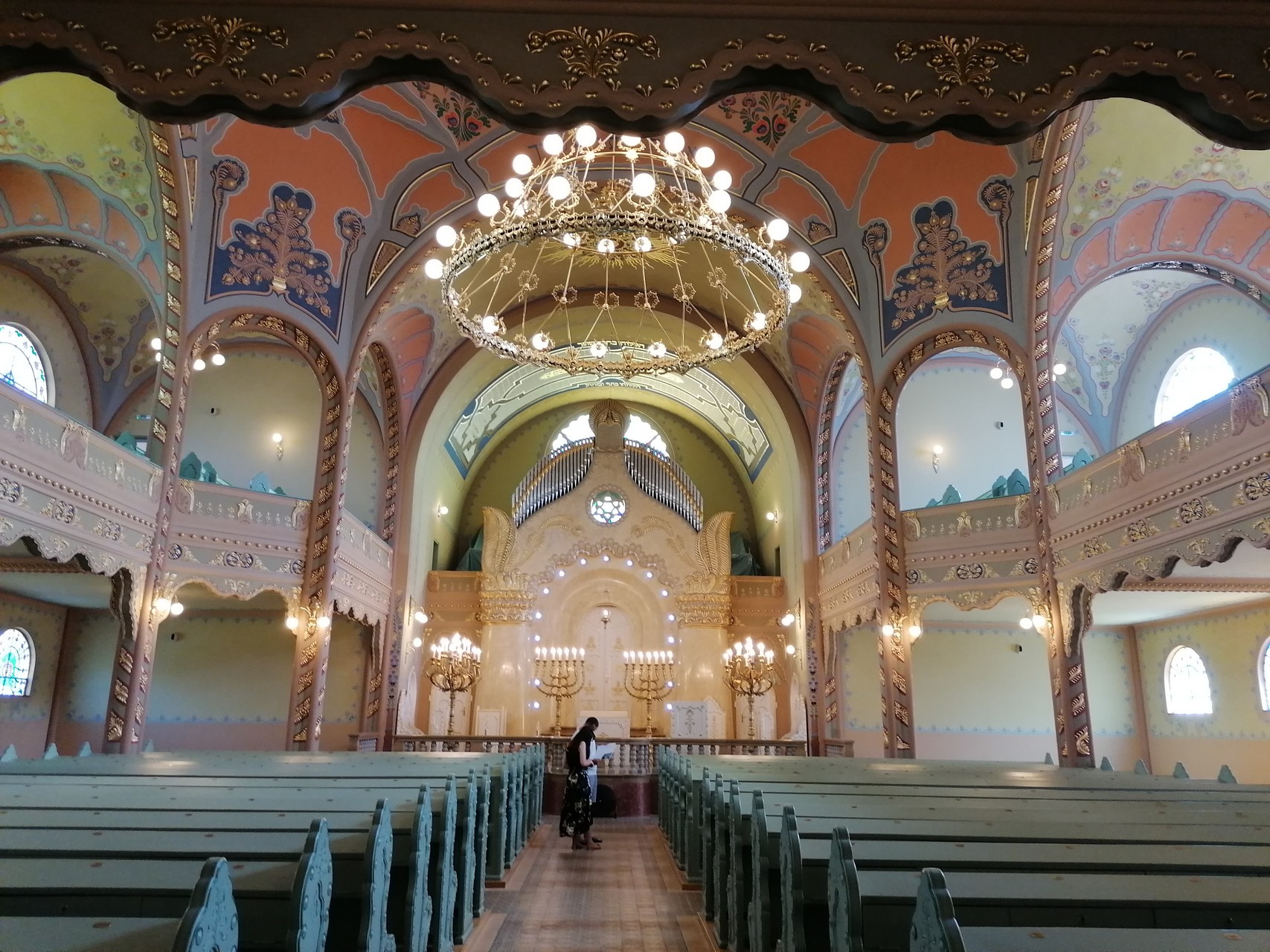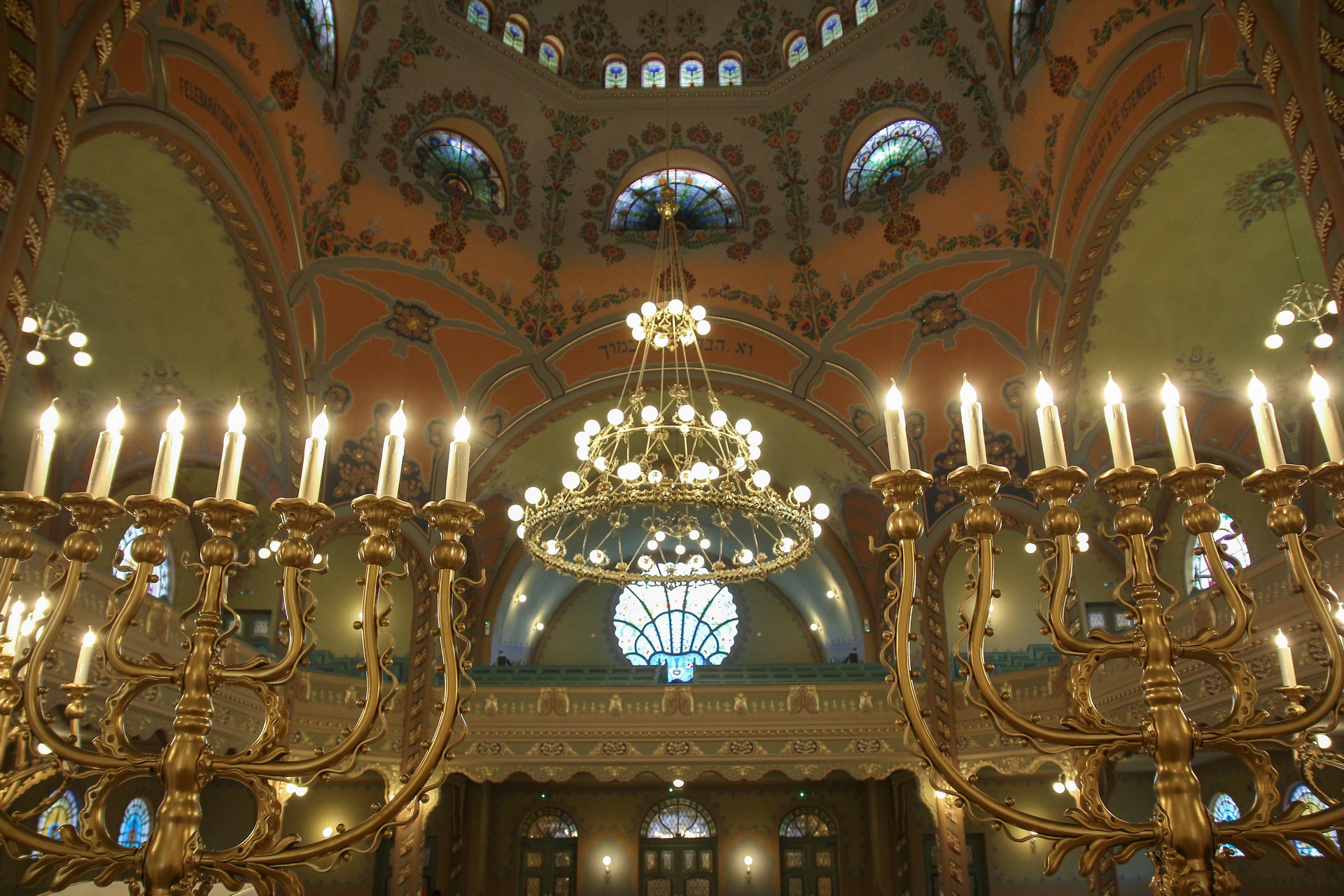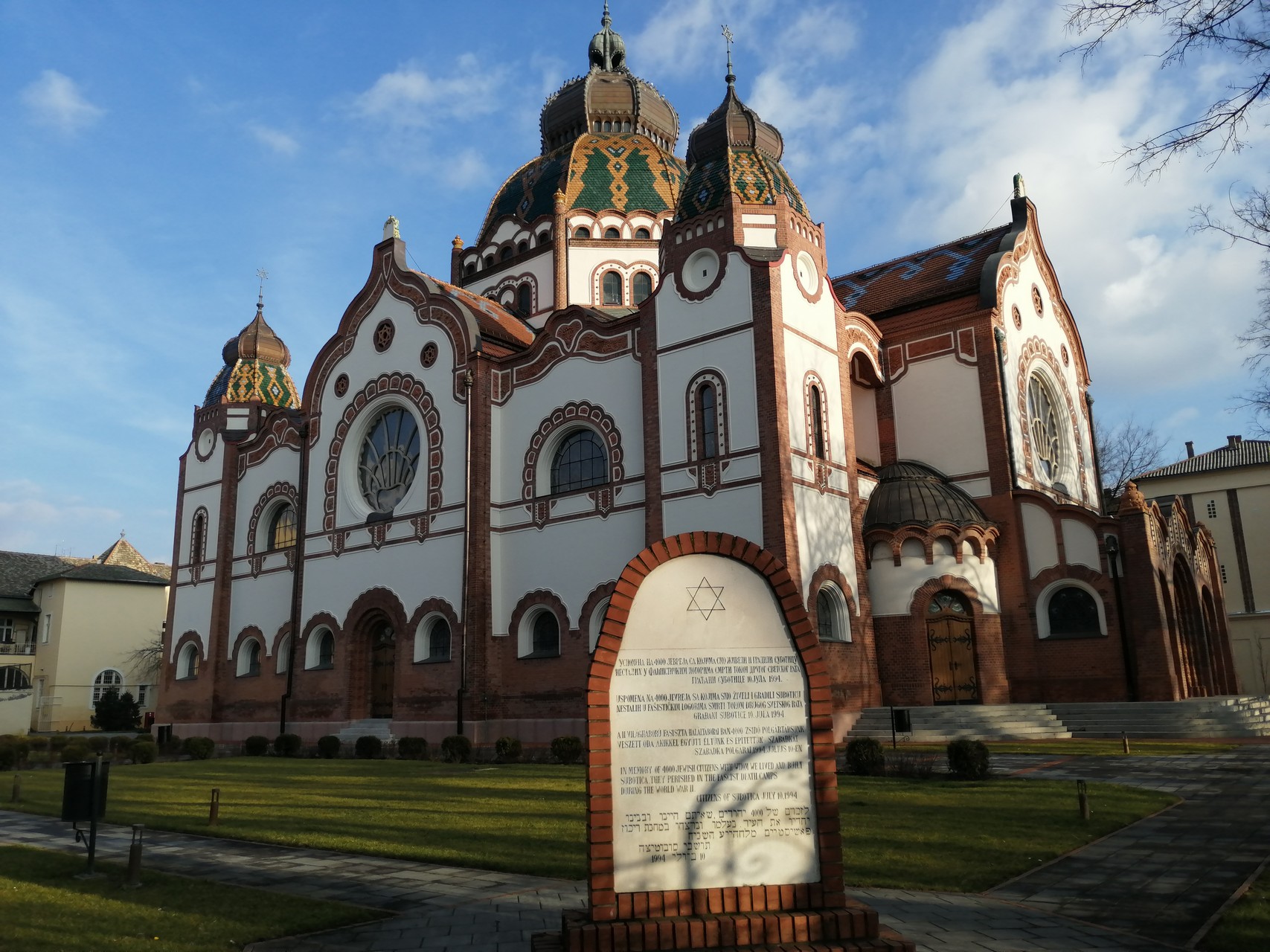- The gorgeous Subotica Synagogue dates back to 1902.
- It was the work of renowned Budapest architects Dezső Jakab and Marcell Komor.
- In addition to its indisputable artistic and aesthetic value, it is exceptional because it is the only synagogue in Europe that contains elements of the Hungarian Art Nouveau style.
- Applying the new national style in the design of the synagogue, Jews, clients and architects, wanted to emphasize the presence, affiliation and importance of the Jewish community in the city through the language of architecture.
- There are some other aspects of Subotica’s synagogue that should be emphasised: its avant-garde construction, the harmony between its construction and decoration, and the intertwining of its function and form.
- The Synagogue was able to receive up to 1400 people, 850 men on the ground floor and 550 women on the gallery. Valid testaments of its size are its dimensions: height of the interior space is 23 meters, and the diameter of the dome is 12.6 meters. The external height of the building is 40 meters.
- In the decades following World War II, the relatively few Jews from Subotica who survived the Holocaust could neither fill nor maintain the building. For many years it was dilapidated. So, in 1976, Subotica’s Jewish community presented the building to the city, under the condition that it would be restored and used for cultural purposes.
- The restoration of the Synagogue begun in 2012 and was finished six years later.
- Eventually, the stunning Subotica Synagogue was completely restored and is once again ready to welcome visitors.
- Today, apart from being used for religious services for the Jewish High Holidays, the synagogue also serves as a concert venue and is also open to tourists.


